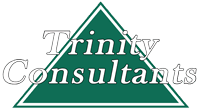It can be a long haul back from injury, illness and Veterinary treatment back to active fitness and the care and the patience exhibited by many horse owners and trainers during such times can be truly inspiring especially when it turns out that it is not possible to fully return to the ’Summer Days’ and far from ideal compromises have to be considered as to the future. Due to our involvement in helping recovery and convalescence following treatment, we understand the traumas and can often be of help so to this end we have produced a new reference booklet of RN (remedial nutrition) programmes that may be useful to therapists, yard managers and trainers indeed any Horse owners with a number of horses liable to have to recover from some mal-condition sometime in the future.
Following medical treatment to repair an injury or kill a disease there is a period when the horse may well have special dietary needs over and above their regular good feeding to gain full health, under the law these are additional feeds, often only a few grammes weight, defined for a particular additional nutritional purpose commonly known as a ‘Special Purpose Feed’ and are for the individual horse for a period of time hence our requirement for the name of the horse and its weight which has to be clearly shown on the label and a Statutory Notification that must always be produced. The only exception to this from us is EQUINOURISH which although an outstanding feed for convalescing and strengthening the constitution is general and not specific and in the new book features as a possible follow-on after a programme feed.
None of the specific programmes listed are cast in stone but give a general idea of what may be needed, a specific programme may still have to be produced for the individual horse however as a guide to the therapist and owner the booklet gives a very good idea of what may be the way forward in supporting the horses during its recovery phase and also where applicable any prophylactic feeding.
Some of the programmes are quite detailed, over the years we have learnt that it is best to do the most to achieve a satisfactory outcome for the horse or pony than to do the least to achieve a satisfactory outcome, in theory the two are the same but in practise not always so. What we also know is the quicker help is applied the better, take for example the common problem in horses of Urticaria (Hives) a mal-condition of the skin which occurs when transient swelling causes obstruction to the flow and excretory functions of the skin’s lymph and vascular system. Thought of as a perishable blocked drain it is important to unblock because the longer things are left the more the whole drain disintegrates and a much bigger job of mending ensues this is why it is well known that if something is done about acute Urticaria quickly the easier it is to get over it and that chronic Urticaria is conversely so notoriously hard to recover from.
Finally, case experience never fails to remind us that trauma, especially two traumas, with the second, sometimes only small, occurring before the horse has got over the first trauma will very often lead to further mal-conditions in addition to the original problem. It is as if the horse can uses up too many of its fire extinguishers on the first fire and almost overnight exponential cellular growth can become exponential cellular decay (hence the reason for so many references to Hydrobase H29 and TPG5) in turn threatening the stability of the digestive system, muscle function skin and other organ function and the immunity system etc etc.
We are currently updating our list of Yard and Rehab Managers, Therapists, Trainers and horse owners for which the RN Programmes booklet may be useful to dip into when needed, let us know if you wish to be added to it and we will send one to you and future copies when reprinted
